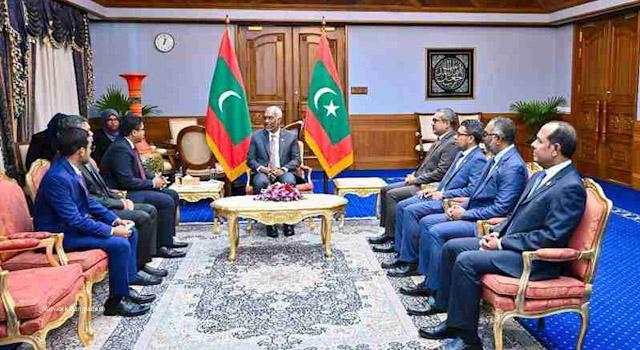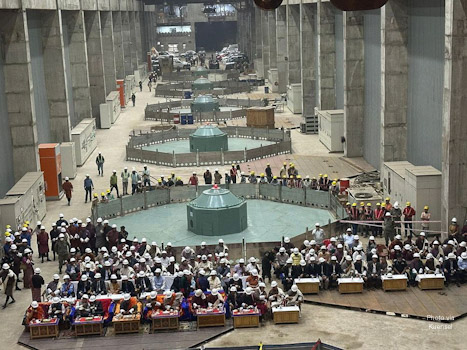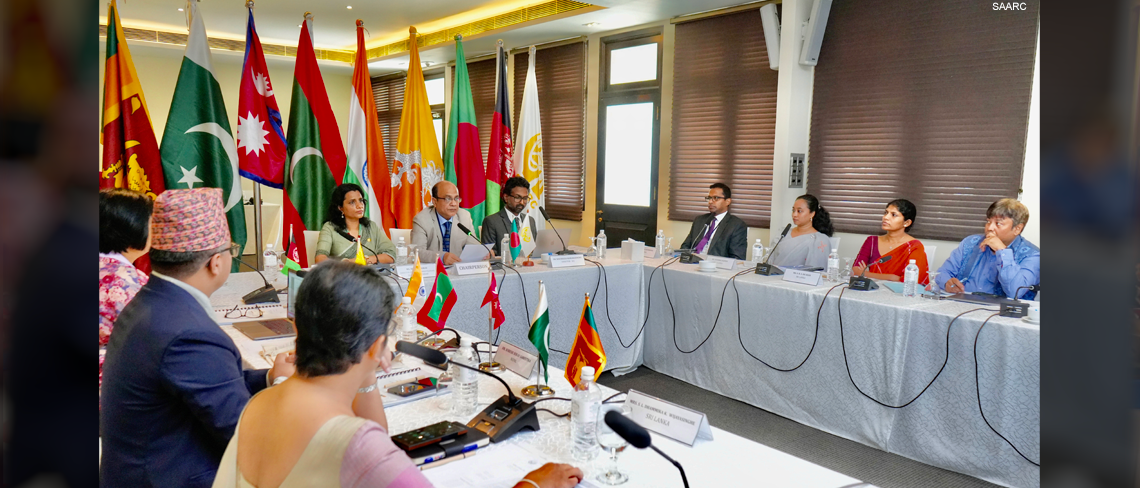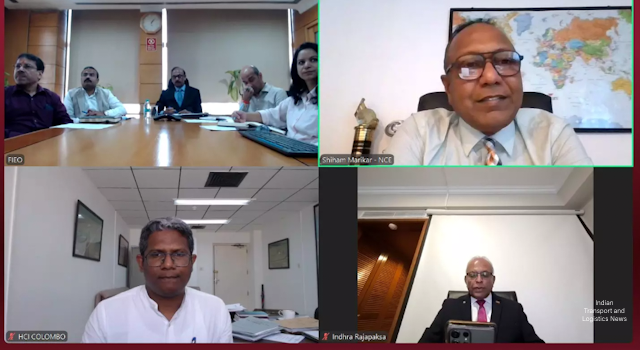
Commentary: Boosting Regional Integration with Enhanced Multimodal Transport Links
24 September 2024
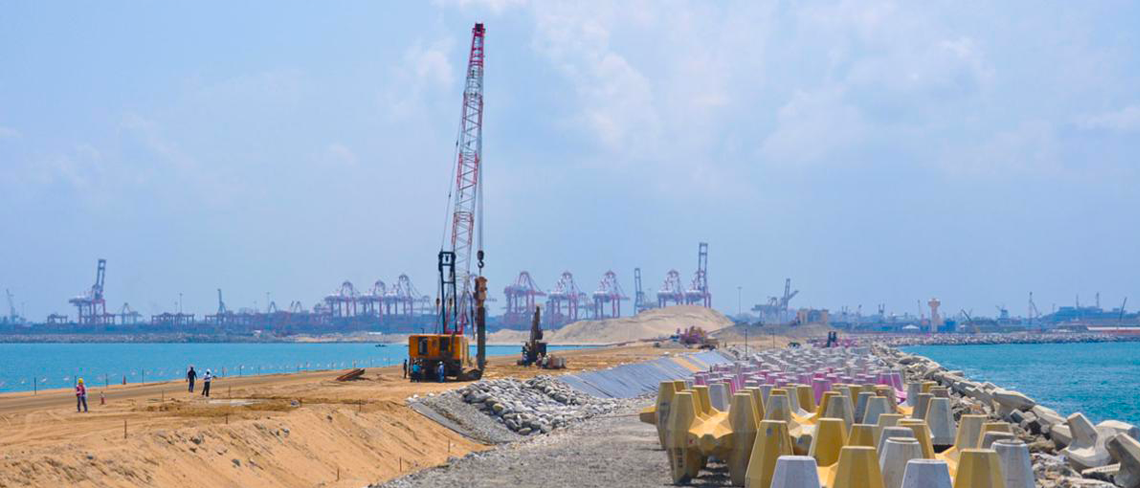
Boosting Regional Integration with Enhanced Multimodal Transport Links
By Mr. Li Donxiang, Mr. Bruce Winston, and Ms. Lani Garnace
Overview
The South Asian Association for Regional Cooperation (SAARC), established in 1985, promotes economic growth and social progress through regional cooperation and integration (RCI). It is composed of eight member states: Afghanistan, Bangladesh, Bhutan, India, Maldives, Nepal, Pakistan, and Sri Lanka. Its programs create a land bridge between South, Central, and West Asia.
In 2023, the SAARC region's population was 1.936 billion, or 24.1% of the global population. However, its GDP was only $4.491 trillion, about 4.3% of the world’s total. Intraregional trade in 2022 reached $82.7 billion, just 5.6% of the region’s total trade, indicating underdevelopment and limited integration nearly four decades after SAARC's founding.
At the request of the SAARC Secretariat and member states, the Asian Development Bank (ADB) conducted the SAARC Regional Multimodal Transport Study (SRMTS) in 2006 to enhance transport connectivity. The study identified transport corridors and recommended policies across all modes: road, rail, maritime, inland waterways, and aviation. However, implementation lagged due to bilateral issues, financing gaps, and weak commitments.
In 2017, SAARC member states revisited the SRMTS to review progress, incorporate new developments, and take action on its recommendations. They also requested to add a chapter on connecting South and Central Asia via all transport modes, with ADB assisting in the update.
This article summarizes the updates of the SAARC Regional Multimodal Transport Study, covering all transport subsectors—roads, railways, inland waterways, ports, and aviation—as well as connectivity between South Asia and Central Asia.
Revamping the SAARC Regional Multimodal Transport Strategy
Road Corridors
Roads are the primary transport infrastructure in most SAARC member states, serving as the main means of domestic connectivity and the key conduit for intra-SAARC trade, either across land borders or via seaports. In recent years, the importance of road transport has grown across all SAARC countries.
The original SMRTS included ten SAARC road corridors, linking: (i) Pakistan, India, and Bangladesh (two); (ii) Nepal and India (two); (iii) Bhutan and India (one); (iv) Nepal, India, and Bangladesh (one); (v) Bhutan, India, and Bangladesh (one); (vi) India and Bangladesh (two); and (vii) Nepal, India, and Pakistan (one). The updated SMRTS highlights recent physical and nonphysical progress in corridor development.
Physical progress includes the 6.15-km Padma Bridge, upgrades to the Sarail-Akhaura link and Elenga-Hatikamrul-Rangpur Highway, and four-laning of the Dhaka-Sylhet Highway and Sylhet-Tamabil Road in Bangladesh; the planned Haldia/Howrah-Raxual Expressway in India; Nepal's Kathmandu-Terai Madhesh Fast Track Project; and Pakistan's Khyber Pass Economic Corridor and six-lane motorways connecting Karachi to Peshawar. Nonphysical progress includes motor vehicle agreements facilitating cross-border transport.
Rail Corridors
Railways have the potential to become a key transport mode in the SAARC region, especially for intraregional movement of goods and passengers between Bangladesh, India, Nepal, and Pakistan. The region's railway network is mainly broad-gauge and compatible across member states, except for the meter-gauge network east of Dhaka, Bangladesh. Once the SAARC rail corridors are fully developed and nonphysical barriers are addressed, efficient rail connectivity will link the concerned SAARC countries.
The original SMRTS included five SAARC railway corridors, connecting Bangladesh, India, Nepal, Sri Lanka, and Pakistan. Recent progress includes several railway projects in Bangladesh (e.g., the Padma Bridge Rail Link, dual-gauge line between Akhaura and Laksam), new rail links in Bhutan and Nepal, and the planned Uzbekistan-Pakistan-Afghanistan Railway.
Inland Waterway Corridors
Among SAARC countries, only Bangladesh and India have organized inland waterways, facilitating freight transit between the two nations. In earlier SMRTS stages, two inland waterway corridors of regional importance were identified based on current and potential future traffic. These corridors also offer direct waterway links for Northeast India to the ports of Kolkata and Haldia. Landlocked Bhutan and Nepal could benefit from multimodal and intermodal connections to these waterways, providing access to the sea.
A recent development is the consolidation of the Eastern Waterways Grid, linking rivers in Bangladesh and India with roads and rail to improve connectivity. The Grid builds on the Indo-Bangladesh Protocol Routes, enhancing trade and transit between the two countries. It promises significant cost savings for bulk goods transport in India and revenue generation for Bangladesh through port fees and cargo services, with potential benefits for Bhutan and Nepal.
Maritime Gateways
The previous SMRTS versions identified ten major maritime gateways based on current traffic volume, potential to handle future intraregional container traffic, and access for landlocked countries to seaports.
The updated SMRTS highlights recent progress in the maritime sector. Bangladesh is developing two new gateways: Payra, now operational, and Matarbari, under construction and expected to become the country’s first deep-sea port. Chattogram Port has undergone significant expansion, with a framework for its sustainable development as a transshipment hub for Northeast India. India's Visakhapatnam (Vizag) Port, the largest on the Eastern Coast, has increasingly served Nepali transit traffic. Other notable developments include a planned new port at Thilafushi in Maldives, a major port concession in Karachi, Pakistan, and continued expansion of Colombo Port, Sri Lanka. Additionally, ferry services between India and Sri Lanka have been proposed.
Aviation Gateways
The original SMRTS identified 16 SAARC aviation gateways and noted the need to increase this number by 2030 by upgrading domestic airports to regional hubs and regional airports to international ones. It also acknowledged the complexity of identifying aviation hubs within the SAARC region, which goes beyond the scope of the SMRTS.
Based on recent developments discussed at a February 2024 workshop in Kathmandu, additional aviation gateways were included in the updated SMRTS. These are in Bangladesh (Chattogram, Sylhet, Cox's Bazar, Saidpur), Bhutan (Gelephu), Maldives (Gan), Nepal (Gautam Buddha, Pokhara), Pakistan (Islamabad), and Sri Lanka (Mattala Rapsaka, Jaffna, Batticaloa).
Between 2020 and 2024, the aviation sector faced challenges due to the COVID-19 pandemic, which lowered passenger and freight demand. As the sector recovers, the challenge is to rebuild and reshape it, redesigning terminals to meet new requirements and implementing measures to address environmental concerns, including decarbonization.
Connectivity between South Asia and Central Asia
Recent developments in transport connectivity between South Asia and Central Asia include United Nations General Assembly Resolution 76/299 on strengthening regional connectivity, the Khyber Pass Economic Corridor, the Uzbekistan-Pakistan-Afghanistan Railway Project, the International North-South Transport Corridor (a 7,200-km multimodal route linking India, Iran, Azerbaijan, and Russia), and the Delhi Declaration from the 1st India-Central Asian Summit in January 2022.
Air connectivity between South Asia and Central Asia remains limited, despite Central Asia's landlocked nature and challenging geography. Air transport is crucial for moving perishable and high-value goods and facilitating business travel and tourism.
Key Takeaways on Strengthening SAARC Transport Connectivity
To enhance transport connectivity in the SAARC region, short- (2024-2028) and long-term (2029-2033) actions are required. The following key measures should be prioritized:
Regional road corridors: Reduce route distances by developing new alignments; widen, improve, and upgrade roads; implement motor vehicle agreements and regional axle load agreements; operate axle load control stations; modernize border crossings; and enhance electronic customs management systems.
Regional rail corridors: Extend rail networks to Afghanistan, Bhutan, and Nepal; increase capacity, improve signaling, and add crossing and bypass lines; implement gauge conversion and technology solutions for cargo; facilitate freight rail operations between India and Bangladesh; explore transit cargo opportunities for Bhutan and Nepal; and implement comprehensive rail agreements and customs simplification measures.
Regional inland waterways: Consolidate the Eastern Waterways Grid, interlinking rivers in Bangladesh and India with roads and rail for seamless connectivity.
Regional maritime gateways: Invest in port infrastructure, expand berthing and container terminals, conduct dredging, and improve rail and road links. Develop alternative gateways, adopt "green" and "smart" port practices, strengthen institutions, and boost productivity programs. Consider cruise tourism developments.
Regional maritime corridors: Develop ferry services between India and Sri Lanka.
Regional aviation gateways: Invest in airport infrastructure, including terminals, cargo facilities, runways, and air traffic control systems. Develop additional airports where needed; introduce passenger flow management and e-gates; back up critical systems; and explore renewable energy use.






